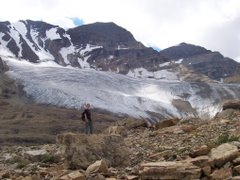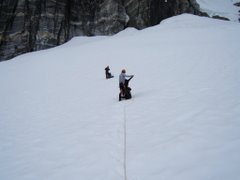


The experimental watershed is broken into various plots of different landuse, % clay, slope, and other attributes. Below are clumps of no-till soil compared with tilled soil. The no-till soil has many long burrows from worms.


This is a plastic cast of one of the burrows made in the no till soil.
Because the water cycle and landuse are monitored, we will be able to determine much about the controls on the carbon cycle in response to landuse and other conditions.


